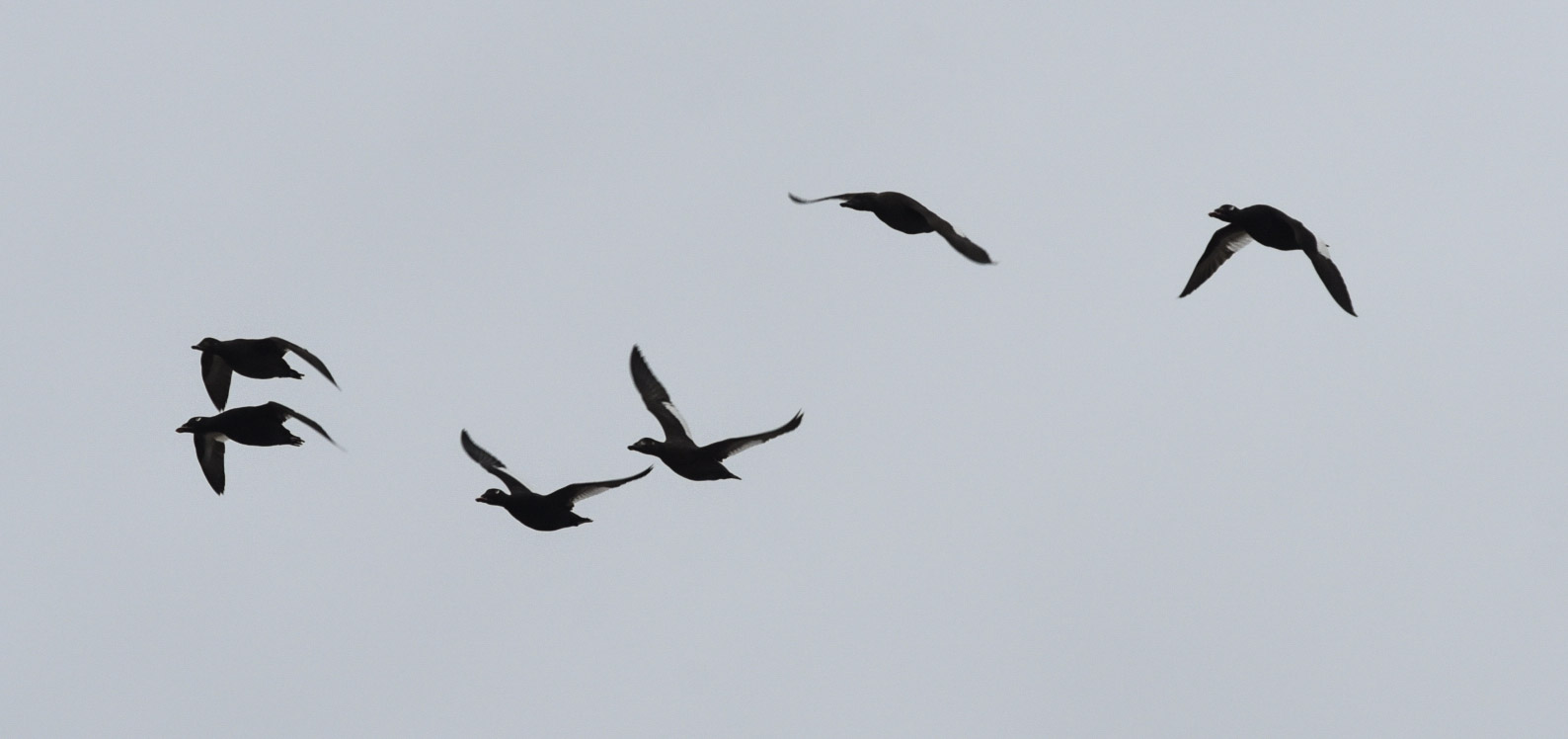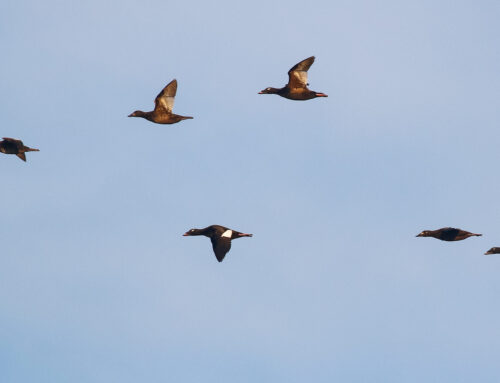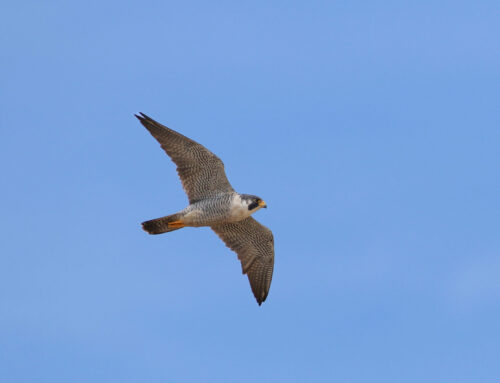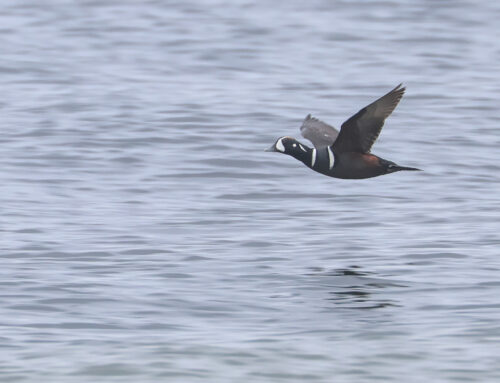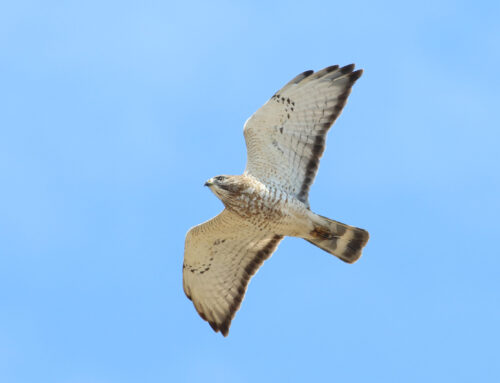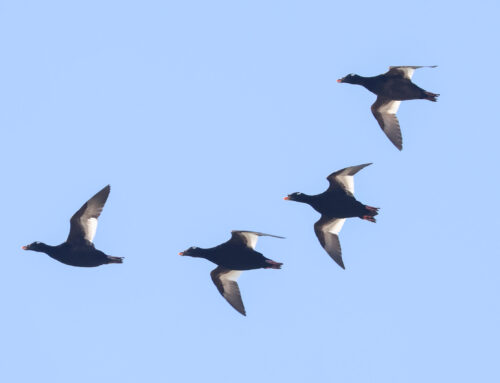It hardly seems possible, but Whitefish’s Waterbird Count is nearing the end of its penultimate week. And, what a week it has been! Some of the migration moments I’ve been anticipating since season’s start have happened, and they’ve been well worth the wait. These include:
The Scoter flight: this time of year, hundreds of White-winged Scoters, a smattering of Surfs, and a few Black Scoters pass by the Point. The season’s totals stand at 1,297 White-wings, 187 Surfs, and 12 Blacks. All these are bound for breeding grounds in northern Canada; scoters, especially White-wings, have increased significantly on the Great Lakes with the advent of invasive zebra mussels, a scoter food source. At Whitefish, scoters are high-ranking crowd pleasers–they are a large-bodied duck easy to pick out, many flocks choose flight paths low to the water and close to the Point, and they tend to fly in evenly spaced lines much easier to count than the chaos of a large Aythya flock or a swarm of Long-tails.
…Speaking of Long-tailed Ducks, though, it’s been a great week for them, too! We’ve logged 2,737 this season; an impressive 1,227 of these were tallied during May 22’s count. They are a personal favorite: their yodeling calls are a quintessential sound of tundra summer, and on a still day, when the cries of the big flocks reach the shack, it’s easy to feel as if you’re being transported north. (Here is a map of eastern Long-tail migrations.)
Bonaparte’s Gulls are another species I just can’t get enough of. For a gull, they are quite well-dressed, with tidy black hoods and a buoyant flight reminiscent of a tern. It was beginning to seem as though May 14th’s flight of 493 was going to be the peak day this season, but I was hungry for a bigger day. Finally, May 21st saw 736, with many flocks passing directly overhead the waterbird shack.
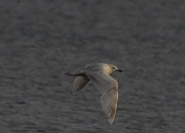
Kumlien’s-type Iceland Gull. Alison Vilag photo.
Still greedy, I went back out to the Point the evening of May 21st to see if there would be a night flight. I just had a feeling–as did four other former WPBO staff who wound up there as well. We started strong, finding a Kumlien’s-type Iceland Gull before we even made it to the beach. 5 American White Pelicans were resting at the harbor; an adult Parasitic Jaeger did a quick, close flyby–our first jaeger of the season, and a bird always appreciated here. Soon, the evening became an unending stream of scaup (212) and White-winged Scoters (357). And then, the Bonaparte’s started, blasting north in the waning light. Finally, we called it a night when it got so dark all we could see of the flocks were passing flashes of white. Hearing their odd raspy calls piercing the dusk and panning frantically to find the flocks before they disappeared will be a favorite memory of this season, for sure. In about two hours, we’d counted over 1800. Here is the night’s eBird checklist.
Other Waterbird Count sightings which merit mention include regular Whimbrel sightings (though we are yet to have a significant flight) and a tagalong Little Gull in with the Bonaparte’s on May 21st. As always, you can find real-time updates on Dunkadoo.
–Alison Vilag, 2019 WPBO Spring Waterbird Counter
Featured photo: a small flock of White-winged Scoters rounding the Point. (Alison Vilag photo.)
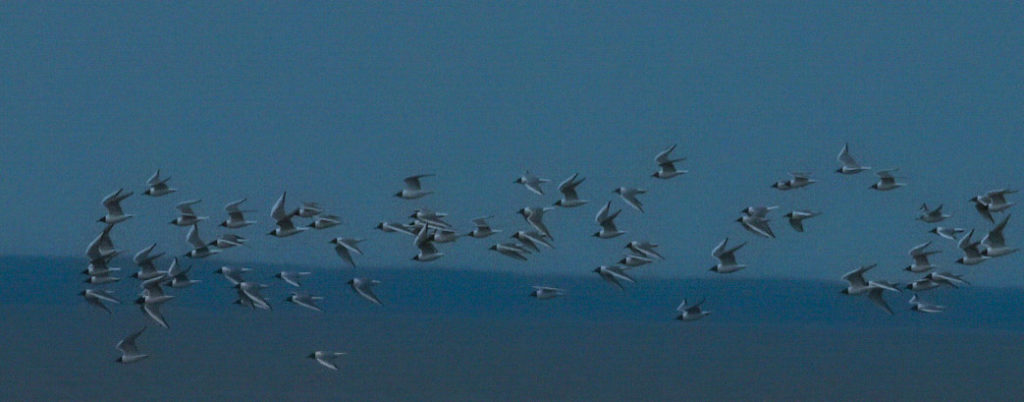
Bonaparte’s Gull flock. Alison Vilag photo.

